- Benefits of Joint Planting
- 1. Maximizing Space Utilization
- 2. Pest Control
- 3. Companion Planting
- 4. Soil Improvement
- 5. Extended Harvest Period
- Autumn Planting
- Garlic Planting
- Planting Over
- Advantages of Planting Garlic over Strawberries:
- Strawberries
- Growing Strawberries
- Benefits of Joint Planting with Garlic
- Advantages of Joint Planting
- 1. Maximizes Space Utilization:
- 2. Pest Control:
- 3. Nutrient Cycling:
- 4. Soil Preservation:
- 5. Biodiversity:
- 6. Aesthetically Pleasing:
- Increased Growth
- Pest Control
- 1. Natural repellent
- 2. Insect control
- 3. Disease prevention
- 4. Companion planting
- Harvest Efficiency
- “Question-Answer”
- Why is joint planting advantageous?
- Is autumn the best time for planting garlic?
- Can I plant garlic at the same time as strawberries?
- What are the benefits of planting garlic over strawberries?
- How should I plant garlic over strawberries?
- Can I plant other crops with strawberries?
- Do I need to take any special care of the garlic and strawberries when planted together?
- “Video” Garlic Growing Tips For 2023
Planting garlic and strawberries together in autumn can provide numerous benefits for gardeners. By combining these two plants, gardeners can make the most of their garden space, improve soil fertility, and even deter certain pests.
Space Optimization: When garden space is limited, joint planting can be a smart strategy. By planting garlic and strawberries together, gardeners can maximize the use of their beds or containers. Garlic bulbs are typically planted in individual cloves, which take up very little space. The strawberries can spread along the ground, allowing for a more efficient use of the available area.
Soil Improvement: Another advantage of joint planting is that garlic can help improve the soil for strawberries. Garlic is known for its ability to deter harmful pests and diseases, such as nematodes and fungal infections. As garlic grows, it releases sulfur compounds into the soil, which act as natural pesticides. These compounds can help protect the strawberries from pests and diseases, resulting in healthier plants and better yields.
Pest Deterrence: Garlic’s strong odor can also help deter certain pests that commonly affect strawberries, such as aphids and slugs. The smell of garlic can act as a natural repellent, keeping these pests away from the strawberry plants. This can reduce the need for chemical pesticides and create a more environmentally-friendly garden.
Care Requirements: When planting garlic and strawberries together, it is important to consider the care requirements of each plant. Garlic typically needs full sun and well-drained soil, while strawberries prefer partial shade and slightly acidic soil. However, with proper planning and care, these two plants can thrive together and provide a bountiful harvest.
Benefits of Joint Planting
1. Maximizing Space Utilization
Joint planting allows for more efficient use of available space in the garden. By planting garlic over strawberries, you can utilize the vertical space and grow two crops in the same area. This is especially beneficial for small gardens or spaces with limited growing areas.
2. Pest Control
Planting garlic alongside strawberries can help in controlling pests naturally. Garlic has natural insect-repellent properties, and the strong aroma it emits can deter pests such as aphids, slugs, and snails from attacking strawberries. This helps in reducing the need for chemical pesticides.
3. Companion Planting
Garlic and strawberries are considered complementary plants when it comes to companion planting. Garlic acts as a natural deterrent for pests that can damage strawberries, while strawberries provide ground cover to suppress weeds and protect garlic bulbs from direct sunlight, thus promoting their growth.
4. Soil Improvement
Garlic is a nitrogen-demanding plant, while strawberries prefer a slightly acidic soil. By planting garlic alongside strawberries, the garlic plants help enrich the soil with nitrogen through their root system, thereby providing essential nutrients for strawberries. In return, the strawberries help create a more suitable acidic environment for the garlic bulbs to grow properly.
5. Extended Harvest Period
Joint planting offers the advantage of extending the harvest period. While strawberries produce fruit during the summer, garlic is typically harvested in the autumn. By combining these two crops, you can enjoy strawberries earlier in the season, followed by a bountiful garlic harvest later in the year.
| Benefits | Explanation |
|---|---|
| Maximizing Space Utilization | Utilize vertical space, grow two crops in the same area |
| Pest Control | Garlic repels pests, protecting strawberries naturally |
| Companion Planting | Garlic deters pests, strawberries provide ground cover |
| Soil Improvement | Garlic enriches soil with nitrogen, strawberries create suitable acidic soil |
| Extended Harvest Period | Enjoy strawberries earlier in the season, followed by garlic harvest |
Autumn Planting
Autumn is the ideal time to plant garlic and strawberries. The cooler temperatures and increased moisture levels provide optimal conditions for the plants to establish strong root systems before the harsh winter sets in.
Benefits of autumn planting:
- Garlic:
- Garlic planted in autumn has a longer growing season, allowing it to develop larger bulbs.
- The cold winter temperatures help to promote the formation of cloves, resulting in a higher yield.
- Planting garlic in autumn also allows it to establish roots before the ground freezes, ensuring better growth in the following spring.
- Strawberries:
- Autumn planting of strawberries allows the plants to establish strong root systems, ensuring better growth and yields in the following spring.
- The cooler temperatures stimulate flower bud formation, which leads to an earlier harvest in the next growing season.
- By planting strawberries in the autumn, you can enjoy fresh, homegrown berries earlier in the spring.
Tips for successful autumn planting:
- Prepare the planting area by removing any weeds, rocks, or debris.
- Amend the soil with organic matter, such as compost or well-rotted manure, to improve fertility and drainage.
- Plant garlic cloves or strawberry plants in well-drained soil, spacing them according to the recommended guidelines.
- Mulch around the plants to conserve moisture and suppress weed growth.
- Water the newly planted garlic cloves or strawberry plants thoroughly and keep the soil evenly moist until the ground freezes.
- Monitor the plants throughout the winter and provide additional protection, such as covering with straw or row covers, if needed.
By taking advantage of the autumn planting season, you can set your garlic and strawberries up for success and enjoy bountiful harvests in the following year.
Garlic Planting
Planting garlic in the autumn has several advantages. Autumn is the ideal time to plant garlic because the cloves need a period of cold temperature to develop properly. Additionally, the autumn planting allows the garlic to establish a strong root system before winter, resulting in healthier plants in the spring.
Here is a step-by-step guide to planting garlic:
- Select the cloves: Choose plump, healthy garlic cloves without any signs of disease or damage. Separate the cloves from the bulb, making sure to keep the papery skin intact.
- Prepare the soil: Garlic prefers well-drained soil with a neutral pH. Remove any weeds or debris from the planting area. Add organic matter, such as compost or well-rotted manure, to improve soil fertility.
- Plant the cloves: Dig a hole that is approximately 2-3 inches deep. Place each clove pointed end up in the hole and cover it with soil. Space the cloves about 6 inches apart in rows that are 12-18 inches apart.
- Water and mulch: After planting, water the garlic thoroughly. Apply a layer of mulch, such as straw or leaves, to help retain moisture and suppress weed growth.
- Provide ongoing care: Garlic requires consistent moisture throughout its growing season. Water the plants regularly, especially during dry spells. Remove any weeds that may compete with the garlic for nutrients and water.
- Harvesting: The garlic bulbs will be ready to harvest in late spring or early summer, around 8-9 months after planting. Look for the leaves to turn yellow and dry out before harvesting. Carefully dig up the bulbs, taking care not to damage them.
By following these steps, you can ensure a successful garlic planting and enjoy a bountiful harvest of flavorful garlic cloves. Autumn planting provides the best conditions for garlic to grow and thrive, resulting in healthy plants and delicious garlic bulbs.
Planting Over
If you are growing strawberries in your garden and want to maximize your space and harvest, considering planting garlic over your strawberry plants in the autumn can be a great option. This technique, known as joint planting, offers several advantages for both crops.
Advantages of Planting Garlic over Strawberries:
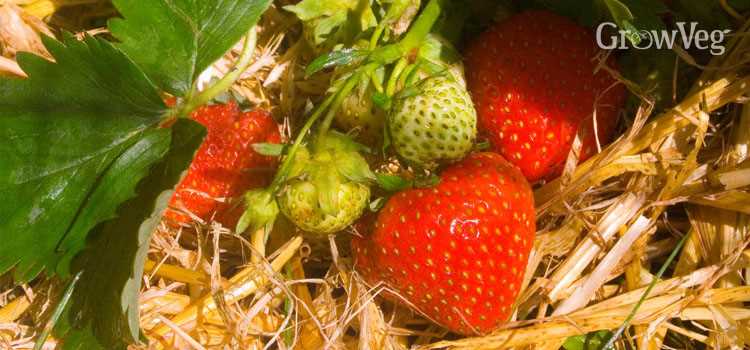
Space Optimization: Planting garlic over strawberries allows you to make the most of your garden space. By using the vertical space above the strawberry plants, you can grow another crop without taking up additional ground area.
Complementary Growth Cycles: Garlic and strawberries have different growth cycles. This means that garlic can be planted in the fall while strawberries are still producing fruits. As strawberries go dormant during the winter, garlic will be ready for harvest in the spring, maximizing your harvest throughout the year.
Natural Pest Control: Garlic is known for its pest-repellent properties. By planting garlic over strawberries, you can help deter pests that may damage your strawberry plants, reducing the need for chemical pesticides.
Enhanced Soil Health: Garlic plants contribute to soil health by adding organic matter and nutrients as they grow. This can benefit the strawberry plants underneath, promoting healthier growth and higher yields.
Aesthetic Appeal: The contrasting colors and textures of garlic and strawberry plants can create an visually pleasing garden bed. The tall, spiky garlic plants can add height and interest to the strawberry patch, enhancing the overall appearance of your garden.
In conclusion, joint planting garlic over strawberries in the autumn provides several advantages, including space optimization, complementary growth cycles, natural pest control, enhanced soil health, and aesthetic appeal. Consider implementing this technique to increase the productivity and attractiveness of your garden.
Strawberries
- Strawberries are delicious and nutritious fruits that are loved by many people.
- They are low in calories and high in vitamins, such as vitamin C, vitamin K, and folate.
- Strawberries are also a good source of antioxidants, which help protect the body against damage from free radicals.
- They have been shown to have various health benefits, including improving heart health and reducing inflammation.
Growing Strawberries
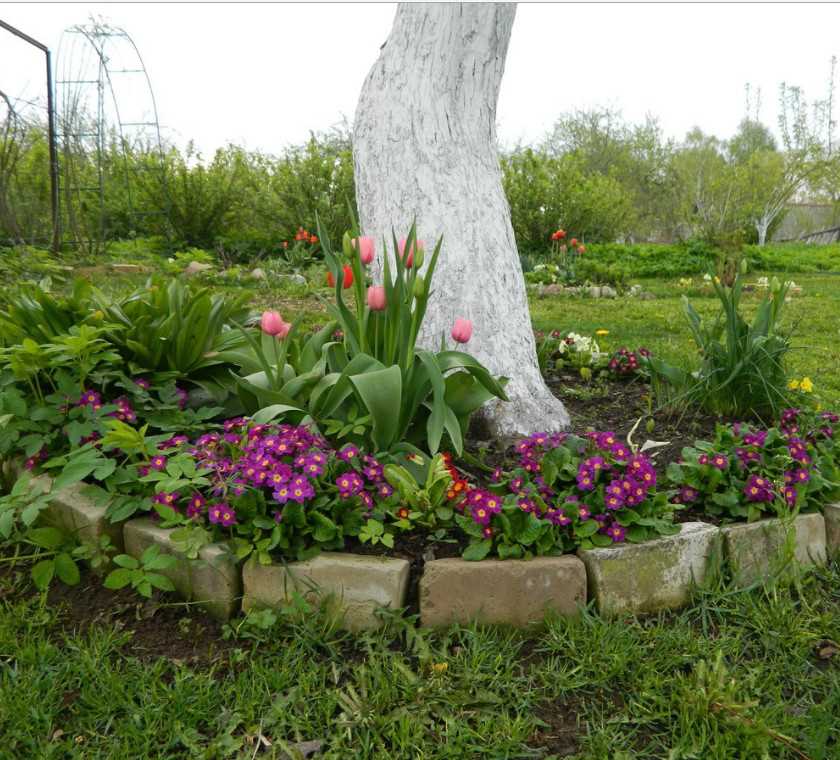
Strawberries can be grown in containers, raised beds, or traditional garden beds. Here are some important tips for growing strawberries:
- Choose a sunny location for planting strawberries.
- Prepare the soil by adding organic matter and ensuring good drainage.
- Plant strawberry plants in the spring or early fall.
- Keep the soil moist, but not waterlogged.
- Apply mulch around the plants to suppress weeds and retain moisture.
- Fertilize the plants regularly with a balanced fertilizer.
- Harvest strawberries when they are fully ripe for the best flavor.
Benefits of Joint Planting with Garlic

Planting strawberries together with garlic can have several advantages:
- Garlic acts as a natural pest deterrent and can help protect strawberries from pests.
- Garlic has antimicrobial properties, which can help prevent diseases in strawberries.
- Garlic can improve the flavor of strawberries when grown together.
- Joint planting can make efficient use of garden space and increase overall yield.
- Autumn planting of garlic over strawberries allows the garlic to establish before winter and provides protection for the strawberries during cold weather.
By carefully considering the benefits of joint planting and following proper growing techniques, you can enjoy a bountiful harvest of delicious strawberries.
Advantages of Joint Planting
Joint planting, also known as companion planting, is a gardening technique that involves growing different plants together in the same area. This practice has numerous advantages and is increasingly popular among gardeners.
1. Maximizes Space Utilization:
Joint planting allows for the efficient use of space in a garden. By growing compatible plants together, gardeners can maximize their yield from a given area. For example, planting garlic and strawberries together allows for a more efficient use of space, as the garlic plants can be planted in between the strawberry plants.
2. Pest Control:
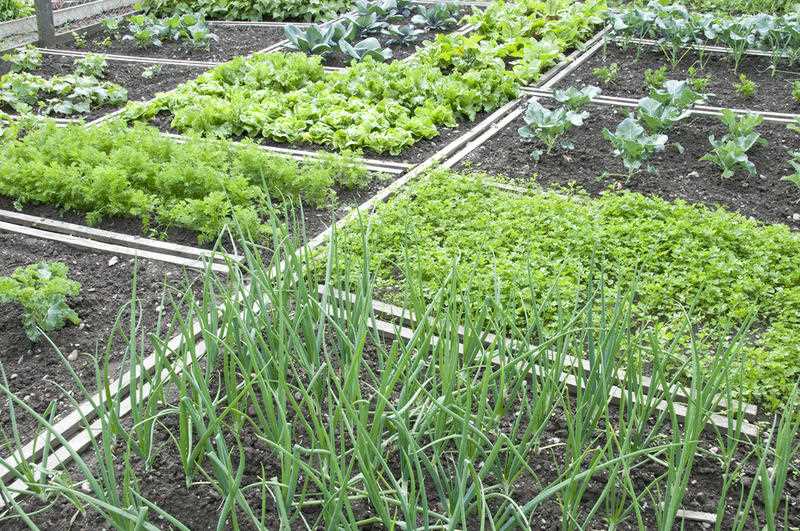
One of the key advantages of joint planting is its ability to naturally control pests. Certain plants, when grown together, can repel or deter pests, reducing the need for chemical pesticides. For example, garlic is known to repel aphids and other pests that commonly affect strawberry plants.
3. Nutrient Cycling:
Joint planting can help improve soil fertility through nutrient cycling. Different plants have different nutrient requirements, and by growing them together, the soil can benefit from a more balanced nutrient profile. For instance, garlic and strawberries have different nutrient needs, and planting them together can result in a more diverse and nutrient-rich soil.
4. Soil Preservation:
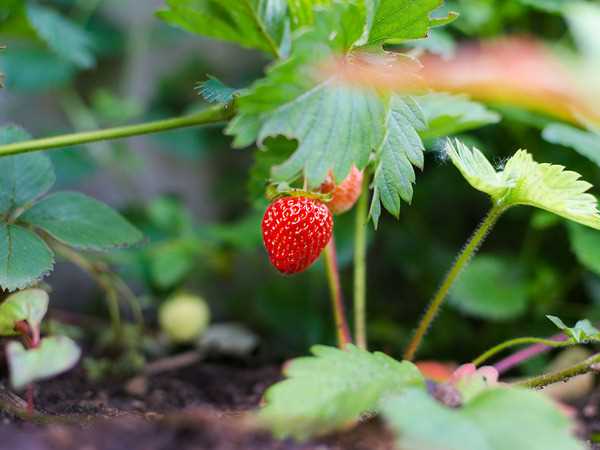
Growing various plants together can help protect and preserve the soil. The roots of different plants interact differently with the soil, helping to prevent erosion and improve soil structure. In the case of joint planting garlic and strawberries, the garlic plants’ roots can help stabilize the soil and prevent erosion, benefiting the strawberry plants as well.
5. Biodiversity:
Joint planting promotes biodiversity in the garden. By growing different plants together, gardeners can create a diverse ecosystem that supports a wide range of beneficial insects and microorganisms. This biodiversity can help control pests, improve pollination, and create a more resilient and sustainable garden.
6. Aesthetically Pleasing:
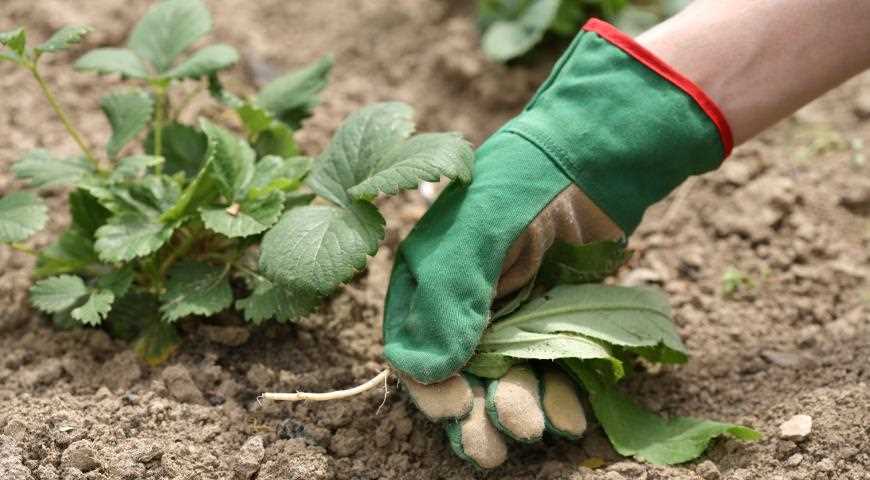
Finally, joint planting can have visual benefits. Planting different types of plants together can create a visually appealing garden with a variety of textures, colors, and heights. This can enhance the overall beauty and enjoyment of the garden space.
In conclusion, joint planting offers numerous advantages for gardeners. From space utilization to pest control and soil preservation, this technique can result in a productive, diverse, and visually appealing garden. Consider trying joint planting in your own garden to enjoy these benefits and more.
Increased Growth
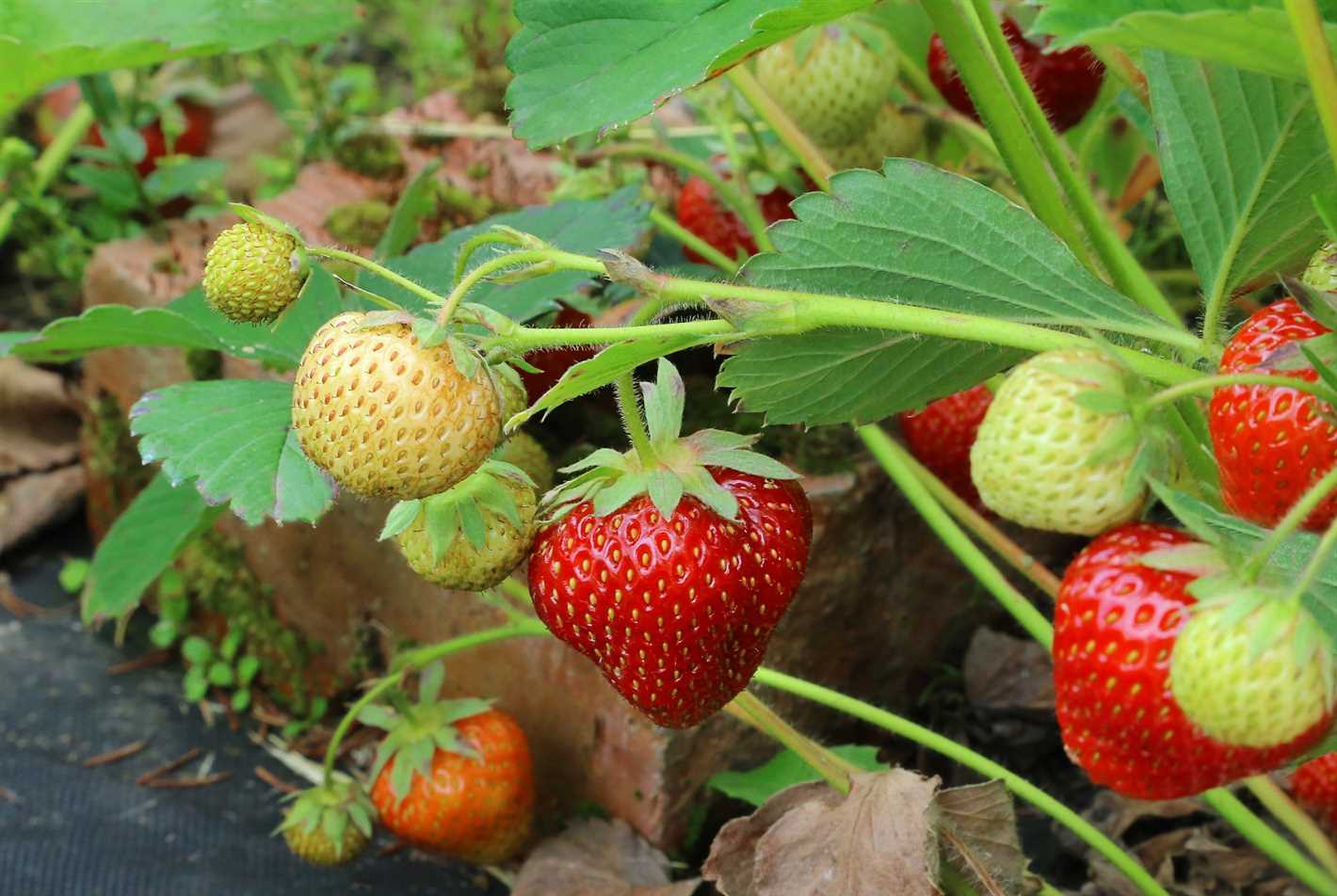
One of the major advantages of joint planting is the increased growth of both garlic and strawberries. When garlic is planted in close proximity to strawberries, it creates a mutually beneficial relationship.
Garlic plants release a compound called allicin, which has natural pesticide properties. This helps protect the strawberries from pests and diseases, leading to healthier plants and increased growth.
Additionally, the close proximity of the plants allows for better pollination. Bees and other pollinators are attracted to the flowers of the strawberry plants and, in the process, also pollinate the garlic plants. This results in improved fruit-set for both crops.
The increased growth of both garlic and strawberries not only leads to higher yields but also improves the overall health and vigor of the plants. This can result in better quality produce with improved taste and flavor.
Pest Control
Joint planting of garlic with strawberries can also help control pests in your garden. Here are some ways that this planting strategy can aid in pest control:
1. Natural repellent
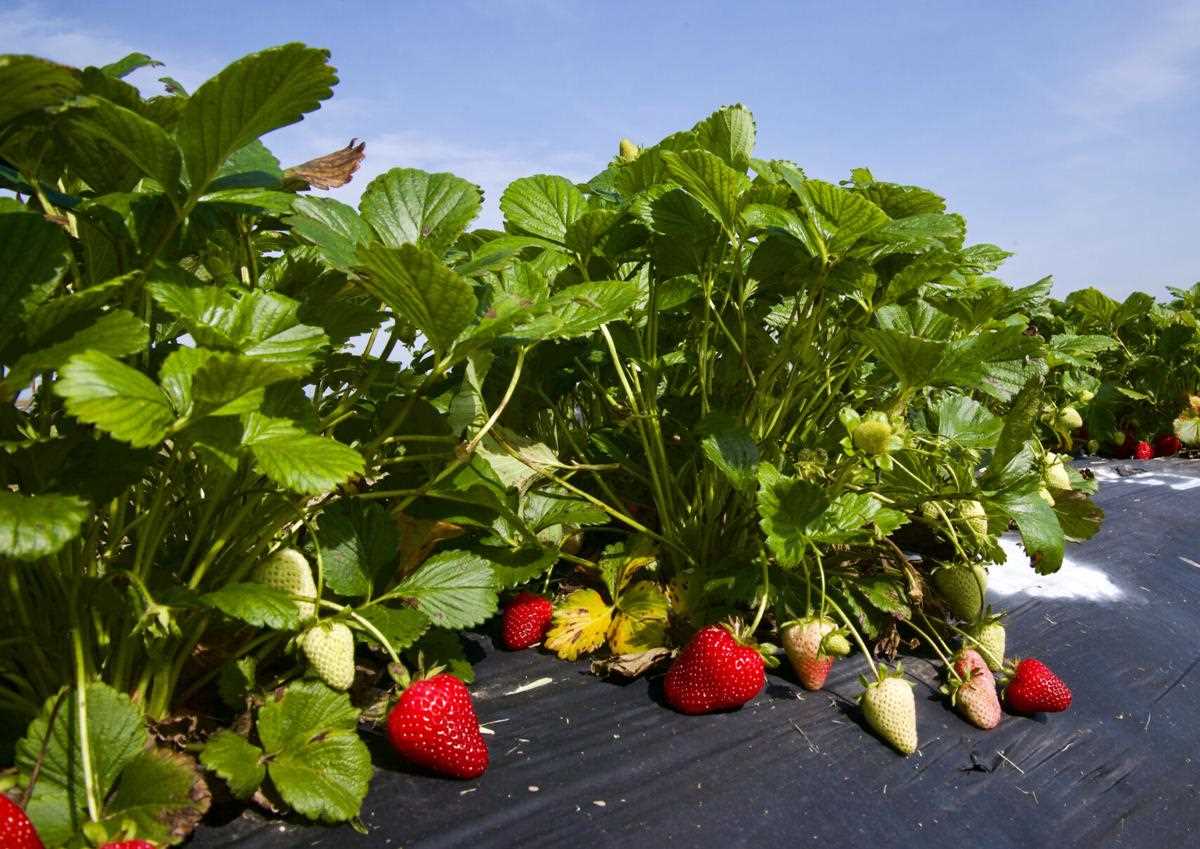
Garlic has strong natural repellent properties that can help keep pests away. Its strong smell and taste can deter insects and animals that may damage your strawberries. Planting garlic near your strawberry plants can create a barrier that pests are less likely to cross.
2. Insect control
Garlic is known to repel many common garden pests, including aphids, spider mites, and nematodes. These pests can cause significant damage to strawberry plants and reduce the overall yield. By intercropping garlic with strawberries, you can help reduce the population of these pests and minimize the damage they cause.
3. Disease prevention
In addition to repelling pests, garlic also has natural antifungal and antibacterial properties. By planting garlic near your strawberry plants, you can help prevent the spread of diseases that can affect strawberries, such as gray mold and powdery mildew. These diseases thrive in humid environments, and garlic can help create a less favorable condition for their growth.
4. Companion planting
Companion planting, such as joint planting of garlic and strawberries, can create a diverse and balanced ecosystem in your garden. The presence of garlic can attract beneficial insects, such as ladybugs and lacewings, which feed on aphids and other strawberry pests. This can further enhance pest control in your garden.
By incorporating garlic into your strawberry planting beds, you can not only enjoy the benefits of this flavorful herb but also improve pest control in your garden and safeguard the health of your strawberry plants.
Harvest Efficiency
Joint planting of garlic and strawberries in autumn offers several benefits in terms of harvest efficiency:
- Maximizing space utilization: By planting garlic and strawberries together, farmers can maximize the use of available space in the garden or field. Instead of planting garlic and strawberries separately, joint planting allows for the efficient use of land, resulting in a higher yield per unit area.
- Simultaneous harvesting: When garlic and strawberries are planted together, they can be harvested at the same time. This saves time and labor as farmers do not have to perform separate harvests for each crop. It also streamlines the harvesting process, allowing for a more efficient workflow.
- Reduced competition for resources: Garlic and strawberries have different root structures and nutrient requirements. By planting them together, they can access different soil depths and nutrients, reducing competition for resources and ensuring optimal growth for both crops.
- Pest control: Joint planting of garlic and strawberries can help in controlling pests. Garlic has natural pest-repellent properties, and planting it alongside strawberries can help deter pests that might damage the strawberry plants. This reduces the need for chemical pesticides and promotes a more eco-friendly approach to pest control.
“Question-Answer”
Why is joint planting advantageous?
Joint planting is advantageous because it allows for efficient use of space in the garden. By planting garlic over strawberries, you can maximize the use of the land and get two crops from one area.
Is autumn the best time for planting garlic?
Yes, autumn is the best time for planting garlic. Planting garlic in autumn allows the bulbs to establish strong roots before winter sets in, resulting in larger and healthier plants in the spring.
Can I plant garlic at the same time as strawberries?
Yes, you can plant garlic at the same time as strawberries. In fact, planting garlic over strawberries can help repel pests and diseases that commonly affect strawberries, improving the overall health of your strawberry plants.
What are the benefits of planting garlic over strawberries?
Planting garlic over strawberries has several benefits. Garlic acts as a natural pest repellent and can help deter pests and diseases that commonly affect strawberries. Additionally, garlic adds a layer of protection to the soil, preventing weed growth and conserving moisture for the strawberry plants.
How should I plant garlic over strawberries?
To plant garlic over strawberries, start by preparing the soil by removing any weeds or debris. Then, plant the garlic cloves at a depth of about 2 inches, ensuring they are spaced about 4 inches apart. Make sure the strawberry plants are already established and have enough space to grow. Water the area thoroughly after planting.
Can I plant other crops with strawberries?
Yes, you can plant other crops with strawberries. However, it’s important to choose companion plants that are compatible with strawberries and will not compete for nutrients or space. Garlic is a good choice as it has beneficial properties and can improve the health of the strawberries.
Do I need to take any special care of the garlic and strawberries when planted together?
When planting garlic and strawberries together, it’s important to provide proper care to both plants. Water the area regularly, making sure the soil is moist but not waterlogged. Mulch can be applied to conserve moisture and suppress weed growth. Additionally, provide adequate nutrients to the plants through organic fertilizers or compost.







